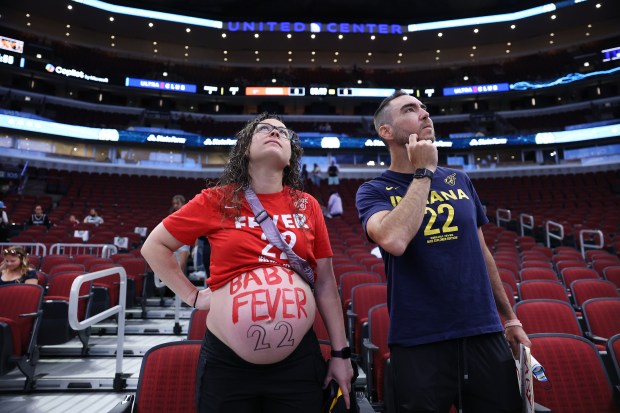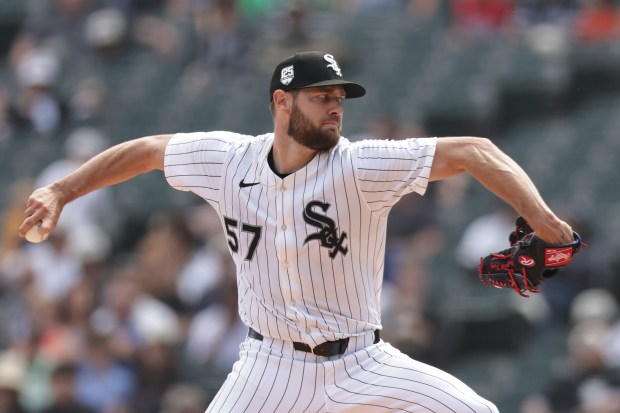The man leading the city of Chicago’s planning efforts for the Democratic National Convention likes to compare the preparation needed for next week’s political celebration to hosting a house party. And he now has a clear directive: It’s time to cut the grass.
For months, legions of city workers have been preparing for the estimated 50,000 politicians, national media and others expected to descend on Chicago for the DNC, which begins Aug. 19. The city has tackled projects big and small, from repaving roads and installing new signs to fast-tracking the new $80 million Damen Avenue Green Line stop near the United Center, where all the show business of the convention will occur.
But with just eight days to go, the fine-tuning is taking place in earnest.
“You cut the grass, you may plant flowers, you may decide to buy new patio furniture, you may decide to buy a new grill. It doesn’t mean that you weren’t taking care of those things before, but when you decide that you’re going to host … you want to make sure that when your guests show up that they have a wonderful experience,” Chicago Chief Operating Officer John Roberson said in an interview with the Tribune. “And part of that is doing things like painting light poles. Do we paint light poles on a day-to-day basis? Absolutely. But the ability for us to accelerate that type, that level of enhancement and aesthetic in advance of the DNC, just makes our city look more beautiful.”
Much of the most noticeable work being done is within the several square miles bordered by Lake Michigan on the east, the United Center on the west, the Gold Coast on the north and McCormick Place on the south. Indeed, on Friday, crews were cutting the grass, whacking weeds and trimming trees in the shadow of the United Center by the corner of Wood and Monroe streets.
The last time Chicago hosted a political convention, the Democrats in 1996, the city’s showing was widely credited with improving Chicago’s national image. Still, then-Mayor Richard M. Daley bristled at the criticism that he cleaned up just enough of the city to make convention delegates comfortable but turned his back on immediate needs outside the zone where the out-of-towners would be.
This time, city officials insist the benefits of the Democrats coming to the city aren’t just centered in Chicago’s downtown, River North or Near West Side neighborhoods. Nevertheless, Johnson is fending off political barbs that his speedy cleanup echoes some of Daley’s efforts, including recent moves by the progressive mayor’s administration to clear homeless encampments in more highly visible areas. Several Johnson administration officials have denied the site removals are because of the DNC.
As the city moves forward on its beautification efforts, it’s also unclear precisely how much Chicago taxpayers will have to pay. Though the outlay likely will reach well into the tens of millions of dollars, city officials have offered little information about the size of the tab to impress the 50,000 visitors. Boosters have predicted economic returns of $150 million or more to cities that hosted recent political conventions, though economists have repeatedly said those numbers are often overblown.
Regardless, Roberson said, the city is viewing the improvements as more than just about making Chicago shine for the four-day event.
“It is our residents and our city that are going to benefit from those enhancements long after the DNC has gone,” Roberson said.
From sidewalks to a new CTA stop
Roberson can breathlessly note the fixes Chicago is making to put its best foot forward for the DNC: sidewalk repairs, light pole painting, refreshed street paint, new signs and better lighting. The Department of Streets and Sanitation is also hard at work, “from picking up debris, to sweeping, to removing graffiti,” Commissioner Cole Stallard said. The DNC gives his department a chance to show off its typically unnoticed everyday work, he added.
“We’ve been prepping on this for quite some time,” Stallard said. “It’s an all-hands-on-deck approach.”
The department brought in 70 recent Chicago Public Schools graduates to help boost its summer cleaning efforts for the DNC, Stallard said. An analysis of costs associated with the extra work will only be possibly after the convention, he added.
The Chicago Transit Authority is tidying up stations beyond its regular cleaning. CTA President Dorval Carter Jr. told the Chicago City Council last month the work included the stops at both Midway and O’Hare airports, where many delegates will begin arriving later this week and next weekend.
“We’re obviously also doing a little bit of sprucing up for the stations to make it a nice welcome for the delegates and our customers at those stations as well,” he said.
In addition, new exterior artistic wraps will be affixed to CTA train cars before the convention, courtesy of the Department of Cultural Affairs and Special Events, a DCASE spokesperson said. And new murals focusing on themes such as democracy, civic duty and diversity will be added to several West Side neighborhoods and other spots across the city.
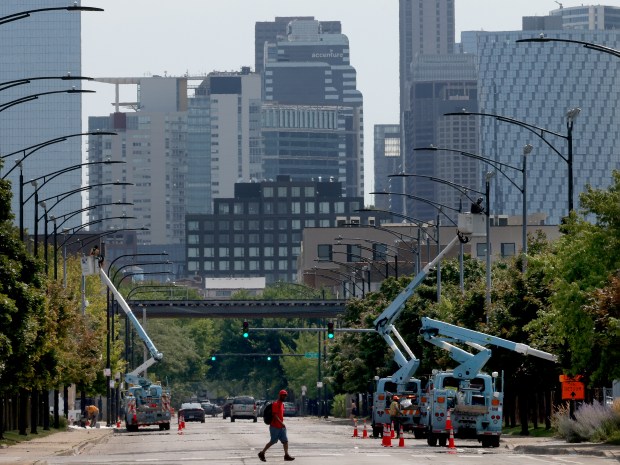
Another art installment will add “a canvas of light” underneath the Loop’s elevated tracks. The metal trusses along Wabash Avenue will be adorned with interactive neon lights paid for with private grant funding and donations, according to artist Jack C. Newell.
Though it doesn’t involve bricks-and-mortar-type infrastructure improvements, the convention has focused on shoring up Chicago’s “human infrastructure” by giving more business to diverse vendors and contractors with mentorship programs, DNC Host Committee spokesperson Natalie Edelstein Jarvis said. The host committee also has worked closely with the Chicago Department of Transportation to make the sidewalks and streets near the convention more accessible.
“Nothing was built just for this moment,” she said.
While the city will be absorbing many of the improvement costs, Chicago and Milwaukee, which last month hosted the Republican National Convention, each received $75 million in federal funds to help offset their convention security bills. Much of the grant will cover police overtime costs, but $11 million is being spent on a new CPD twin-engine helicopter.
“That is a legacy piece that will be here long after the DNC,” Roberson said.
Roberson also touted the resurfacing of Ogden Avenue between Randolph and Taylor streets.
But the crown jewel of city projects tied to the convention is the Green Line stop at Damen Avenue and Lake Street, which opened Monday. Roberson described the long-delayed $80.2 million project, paid for with tax increment finance district revenue, as a future “focal point and an anchor” in the area.

As with other projects, Roberson contended the Green Line station, first announced in February 2017, is a part of the city’s daily work. But the convention brought “the incentive to try to get it done as soon as possible,” he said. The administration is working to identify where it can encourage developers to build affordable housing nearby, he added.
Shortly after Roberson’s interview with the Tribune, the Reinsdorf and Wirtz families unveiled a proposal to develop the parking lots surrounding the United Center a few blocks away from the new CTA station. The private project would include publicly available green spaces, a music hall and 5,000 new units of housing, 20% of them affordable.
“We worked around the clock to make sure that we were able to complete it, so there probably is some cost that is associated with that,” Roberson acknowledged about the Damen Avenue CTA station. “But it also means that there’s an accelerated benefit.”
Most DNC-related projects will be paid for through the city’s regular budget, Roberson said.
“I think that the monies and the resources that we are investing in this beautification is going to pay dividends,” he said.
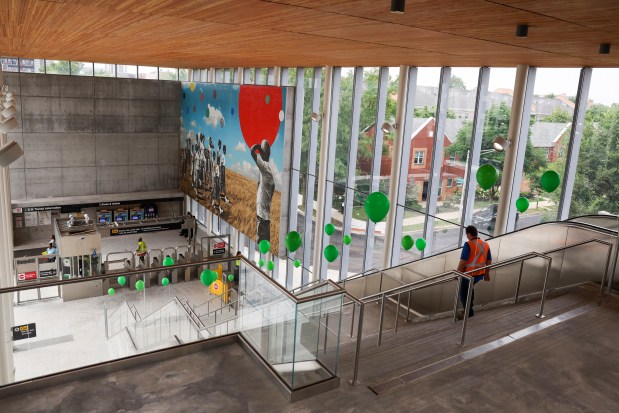
Daley spent more than $60 million to pretty up the city ahead of the 1996 convention, according to a Tribune analysis at the time.
City leaders have made a point of saying they will spread DNC-related resources beyond the United Center and McCormick Place, a goal in tune with Johnson’s stated ambition to reverse the downtown-centric policies of his predecessors that he says left working-class minority neighborhoods to languish without investment for decades.
But the administration has shared few clear details about DNC-related projects slated for the neighborhoods that won’t be in the spotlight. Roberson said the administration is doing “and” and “both,” putting special effort into the convention while also bringing a sharper focus to less wealthy neighborhoods with policies such as Johnson’s $1.25 billion bond program heavily earmarked for affordable housing.
“We can focus on the areas around the DNC,” he said. “But we can equally focus and bring significant investments in places like Englewood and North Lawndale that are going to have the level of impact so that they in 25 years then can be the West Loops.”
Taking notes from the past
To handle the convention, Chicago is taking notes from many past major events, including the NATO summit in 2012, the annual Lollapalooza musical festival in Grant Park, civil unrest that occurred in 2020 following the murder in Minneapolis of George Floyd and, of course, the 1996 convention.
But Chicago’s last DNC occurred when Daley had already served seven years in office. Johnson has had far less time to prepare. Chicago was announced as the host city eight days after Johnson won the April 2023 runoff election, a month before he took office.
“From the time that we came in, we have been in full preparation … to host the convention,” Roberson said.
The short timeline makes this convention harder to plan for than the last, Roberson said. But he praised the foundation the event is built on — a West Loop he says was revitalized by the 1996 convention.
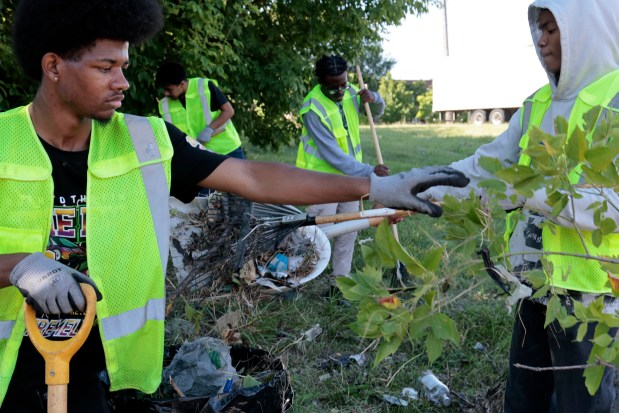
That effort was led by Daley deputy chief of staff Terry Teele, the same man who first hired Roberson into city government. Teele remembers Daley calling him into his office after the 1995 mayoral campaign to put him at the helm of tidying up the area around the United Center.
“Let’s just clean up the West Side. Let’s fast-track a number of the projects that we have talked about wanting to do for a long time,” he recalled the mayor saying.
What came next amounted to a “reimagining” of the area, Teele said. The neighborhood now sparked by development was then dotted with garbage, vacant lots and worn infrastructure, the last remnants of the city’s “Skid Row,” he said.
Teele recalled seeing bikers and Rollerbladers stop and turn around when they got to the area in the years before the convention.
“It was as if there was an invisible wall. They were just afraid to pass a certain point,” he said.
Skid Row: A last resort, a place to disappear — or, for many, home
The struggles of Chicago’s 1968 DNC, marred by police attacks on protesters, also hung over the city’s planners.
“We didn’t need to remind anybody about that,” Teele said. “We were gonna show the new Chicago.”
The efforts to fix up the area ramped up. The city greened school playgrounds, planted 800 trees and put a new median on Randolph Street. Daley’s administration added antique street lamps, pushed vacant lot owners to install black wrought-iron fences, installed flower boxes and got businesses to upgrade facades with a rebate program, Teele said.
The administration also expedited the construction of replacement housing amid the demolition of the Henry Horner public housing buildings, and acquired the last Skid Row buildings and tore them down, Teele added.
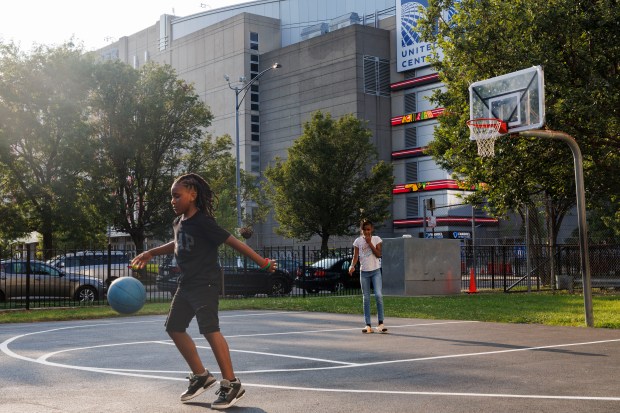
Teele said he could not put a price tag on the 1996 cleanup effort. “Patchwork” funding came from federal grants, tax increment finance districts and the city budget, crafted that year with the convention in mind.
The result is visible today in the vibrant, still-growing Near West Side, he said.
“What happened in 1995 and 1996 is still there. It’s better,” Teele said. “Look at all the new residential. It’s amazing.”
That same potential is back this time, he added, sharing praise for the city’s preparations.
“It’s an opportunity for the city to be seen worldwide. And it’s an opportunity for us to reintroduce our city to the world,” he said.
‘The beauty of our city’
While the city closed the remnants of Madison Street’s Skid Row ahead of the 1996 convention, it did not need to clear out encampments before the event, though the city did try hard to shelter people living on Lower Wacker Drive, Teele said.
“We didn’t have the problem that exists like it does today,” he added.
But Chicago appears to be clearing out tent encampments now.
The Johnson administration cleared a major homeless encampment along the Dan Ryan in mid-July. The 29 “regular” residents, who had been warned of the clearing ahead of time, were offered resettlement at other city-run shelters. City workers leveled the site with bulldozers after residents left.
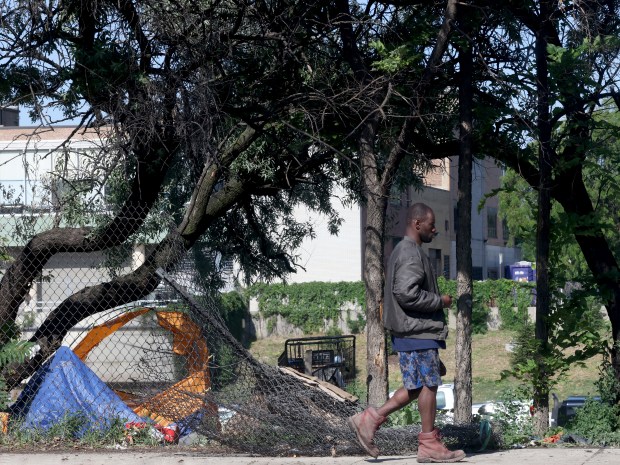
City leaders have provided mixed messages on why the removal happened. Maura McCauley, managing deputy commissioner of the Chicago Department of Family and Support Services, at first said the city fast-tracked the removals ahead of the DNC over concerns that federal security authorities would require the camp be removed, resulting in a more sudden and “traumatic” forced displacement.
Roberson argued the clearing was not related to the DNC and was not a “demolition.”
“What we have done is the work that the city does each and every single day, and that is to focus on our unhoused population. And to find shelter for them until we are able to create this unified system that we’re doing,” he said.
The Secret Service’s security perimeter, released after the clearing, was nowhere close to the encampment. The city has since cleared out a second nearby encampment and another far north in the North Park neighborhood. Authorities also have given pre-convention exit dates to many residents at two migrant shelters close to the United Center.
The effort to show the city in a warm light goes far beyond cleanups and quickened work. The city has carefully prepped security and bulked up transit service. Businesses are readying for a potential jump in sales, while hospitals are bracing for worst-case scenarios.
The true sign of whether or not the countless nervous, proud strides were worth it will come when visitors return to their hotel rooms, pack up and go home, Roberson said. That’s when they will decide if Chicago is a place they want to return to and keep exploring.
But only “if we can show them a glimpse of the beauty of our city,” Roberson said.
Tribune reporter Sarah Freishtat contributed.



